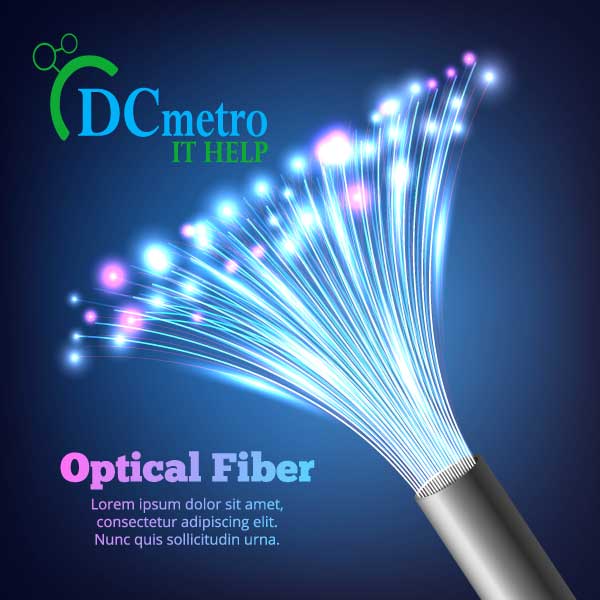In today’s interconnected world, reliable and high-speed internet connectivity has become a necessity for individuals, businesses, and entire communities. Fiber optic technology has emerged as the frontrunner in meeting these demands, offering unprecedented data transfer rates and unparalleled reliability. With its ability to transmit vast amounts of information over long distances, fiber optic deployment is revolutionizing the way we connect and communicate. In this article, we will explore the significance of fiber optic deployment and its impact on various sectors.
Contact us 202-810-7755 today to learn more about IP Camera. Please contact us to setup IP Camera for your business or if you have any questions or concerns.
DC Metro IT Help
Unleashing the Power of Fiber Optics
Fiber optic cables are made up of thin strands of glass or plastic that transmit data using light signals. These cables are capable of carrying a vast amount of information at incredible speeds, dwarfing the capabilities of traditional copper-based networks. By leveraging the principles of total internal reflection, fiber optics ensure minimal signal loss, making them ideal for long-distance transmissions.
Enhanced Internet Speeds
The deployment of fiber optics has significantly increased internet speeds, enabling faster downloads, smoother video streaming, and seamless online experiences. Unlike traditional broadband connections, which rely on copper wires, fiber optics can transmit data at the speed of light, providing gigabit or even terabit speeds. This advancement has opened up new possibilities for cloud computing, data-intensive applications, and emerging technologies like virtual reality and the Internet of Things (IoT).
Improved Reliability and Bandwidth
Fiber optic networks offer unparalleled reliability due to their immunity to electromagnetic interference and resistance to environmental factors such as lightning, moisture, and temperature fluctuations. Unlike copper-based connections, fiber optics are not susceptible to corrosion or degradation, ensuring consistent performance over extended periods. Additionally, the vast bandwidth capacity of fiber optic cables enables multiple users to access high-speed internet simultaneously without compromising the quality of service.
Empowering Businesses and Industries
The deployment of fiber optics has revolutionized various sectors, empowering businesses and driving economic growth.
- Telecommunications: Telecommunication service providers are rapidly upgrading their infrastructure to fiber optics to offer high-speed broadband connections and meet the escalating demands of consumers. Fiber optic networks enable crystal-clear voice and video calls, facilitating teleconferencing, virtual meetings, and telemedicine services.
- Data Centers: With the exponential growth of data-driven technologies, data centers require fast and reliable connectivity to handle massive amounts of information. Fiber optic links within data centers ensure rapid data transfers, efficient storage, and real-time analytics, enabling businesses to leverage big data and cloud computing.
- Education and Research: Fiber optic deployment has had a profound impact on education and research institutions. High-speed internet connectivity enables seamless online learning experiences, video conferencing, and access to digital libraries and research databases. It promotes collaboration among researchers and facilitates the exchange of knowledge globally.
- Smart Cities: Fiber optic networks form the backbone of smart city initiatives. By connecting sensors, devices, and infrastructure, cities can gather real-time data, optimize resource allocation, and improve public services. From traffic management to energy distribution, fiber optics enable efficient, interconnected urban systems.
Challenges and Future Prospects
While the benefits of fiber optic deployment are evident, challenges remain in achieving widespread adoption. The cost of installing fiber optic infrastructure, particularly in rural areas, can be substantial. However, government initiatives, public-private partnerships, and advancements in installation techniques are driving the expansion of fiber optic networks.
The future of fiber optic deployment looks promising. Emerging technologies like 5G, edge computing, and artificial intelligence will further drive the demand for high-speed, low-latency connections. As fiber optics continue to evolve, innovations such as hollow-core fibers, which promise even higher data transfer speeds, are on the horizon.
Fiber optic deployment represents a transformative leap in connectivity, revolutionizing the way we communicate, conduct business, andaccess information. The remarkable speed, reliability, and bandwidth capacity of fiber optics have propelled advancements in various sectors, including telecommunications, data centers, education, and smart cities. Despite the challenges associated with implementation, the future prospects of fiber optic deployment are promising, with emerging technologies and ongoing innovations pushing the boundaries of connectivity.



Leave a Reply